Ордена России - [3]
Коллекция русских наград дает возможность познакомиться не только с историей возникновения и становления наградной системы в России, но и с особой отраслью ювелирного искусства. Первые орденские знаки выполнялись мастерами Оружейной палаты, а в XVIII- начале XIX в. изготовление их поручалось лучшим ювелирам Петербурга. В XIX в. появились мастерские и крупные фирмы по производству всех видов орденских знаков, в которых работали мастера золотого и серебряного дела, художники и эмальеры. Высокое качество обработки драгоценного металла, яркость и чистота эмали различных оттенков, игра алмазов и бриллиантов придавали каждому знаку художественную ценность и неповторимую красоту.
В. НИКИТИНА, зав. сектором нумизматики Государственных музеев Московского Кремля
RUSSIAN DECORATIONS
The State Armoury Chamber of the Moscow Kremlin, the oldest Russian museum treasure-house, besides its rich collection of the decorative and applied art contains also a collection of numismatics: coins, memorial decoration medals, seals, orders and insignias.
The Russian orders, witnesses of the heroic past of our Homeland, present a fascinating part of this display. The Russian decoration system has a history of many centuries. From time immemorial those who had distinguished themselves on battlefields or excelled in the state service received various awards. Very often they were awarded with firearms, precious furs, gold and silver goblets and vessels. However, an especial award-"zolotois"-became particularly widespread in the 15th-17th centuries. "Zolotois" were actually gold coins of different denomination intended for decorating en mass the participants of certain battles and military campaigns. Infrequently it was an entire army back home with victory that was awarded. Proud of this most honourable award, Russian soldiers wore those "zolotois" sewing them onto a sleeve or a hat. At the end of the 17th century the participants in the Crimean Campaigns of 1687 and 1689 were awarded thousands of these "zo/otois". The size of each of the coin strictly corresponded with the rank of its bearer. "Zo/otois" awarded to Prince V. V. Golitsin, Army Commander and his staff were much bigger in size than those awarded to soldiers and officers.
At the beginning of the 18th century these traditions were revived in Peter the Great's decoration medals.
His transformations entailed changes in the Russian decoration system, too, originating new national orders. 1698 saw the institution of the Order of St. Andrew the First-Called, which at that time was Russia's highest award, and General-Admiral and Field Marshal F. A. Golovin was the first to receive officially the Order No. 1 on March 10, 1699.
Initially, it was intended to award maximum 24 persons, but already in Peter the Great's reign the Order was awarded to 38 heroes and subsequently the number of those decorated became unlimited. The Tsar himself, holding the rank of a bombardier-captain, won the Order only in 1703 for capturing two Swedish warships in the mouth of the Neva River becoming the seventh order-bearer. The first-class Order with the motto "For Faith and Devotion " consisted of an oblique gold cross, a blue ribbon, a star and a gold chain. The cross was worn at the waist on a broad ribbon over the right shoulder and on festive occasions-on the chest round the neck on a chain decorated with multi-coloured enamel. The chain had an alternating links of three kinds-double-headed eagles, ornamented frames with Peter the Great's monogram and St. Andrew crosses. The Order's insignias bestowed with diamond decorations signified the Order's highest class.
Members of the tsar's family, heads of foreign states, high officials, generals and diplomats were among the first to receive the first Russian order. Starting with 1797, those awarded with the Order of St Andrew the First-Called at the same time became the bearers of the minor orders of St. Alexander Nevsky and of St. Anne first class. In the 19th century added to them were the Order of the White Eagle and the Order of St. Stanislaus. Early in the 18th century gold decoration insignias-crowned miniature of Peter the Great's portraits decorated with enamel and diamonds were introduced alongside with the medals and the Order of St. Andrew the First-Called. Attaching paramount importance to this award, Peter the Great himself awarded these panagias to his closest associates and generals who had distinguished themselves on battlefields.
The Russian women's Order of St. Catherine with the motto "For Love and the Motherland" was instituted in 1714. Wife of Peter the Great was the first to receive the Order on a festive occasion of her name-day and until 1726 was the only woman to bear this decoration. In later years the Order was awarded to court ladies for charity work.
The appearance of the third Russian order was also linked with the name of Peter the Great. He decided to institute a military award in memory of Prince Alexander Nevsky famous for his victories over the Swedes. However, officially the Order of St. Alexander Nevsky was instituted on May 21, 1725 directly after the death of Peter the Great. Catherine I instituted the Order, the motto of which was "For Feats and the Motherland", as a reward for military feats and civil service to the Homeland. The Order's insignias, adorned with diamonds, signified its highest class. The bearer of this Order with diamonds was the famous ataman of the Cossack Don Army M. I. F4atov, who had been awarded the same order but without diamond decorations for the 1806-1807 campaign.
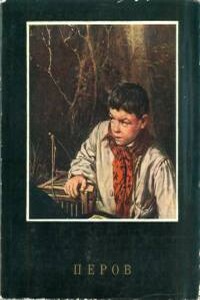
Василий Григорьевич Перов был выдающимся мастером критического реализма в русской живописи 60-х годов XIX столетия. Он первый показал бедственную жизнь и бесправное, нечеловеческое положение, в котором находился русский крестьянин.
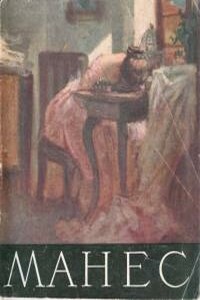
Иозеф Манес стоит в ряду славной плеяды лучших представителей чешского искусства и литературы XIX века. Его имя называют рядом с именами Бедржиха Сметаны, Божены Немцовой, Яна Неруды.Рисовальщик, иллюстратор, живописец и художник-монументалист Йозеф Манес является по существу родоначальником реалистического чешского искусства XIX века.
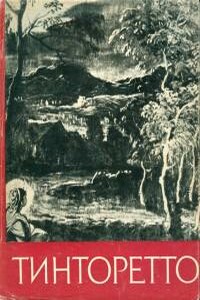
Альбом посвящен творчеству Якопо Тинторетто, великого итальянского художника XVI века, автора знаменитых полотен, украшающих и поныне интерьеры Дворца дожей и многих церквей Венеции, полотен, являющихся гордостью лучших музеев мира. Вступительная статья посвящена творческой биографии мастера, анализу его важнейших произведений. Приведены основные сведения о его жизни, охарактеризовано то новое, что внес художник в искусство своего времени. Помещенные в альбоме репродукции воспроизводят основные работы Тинторетто. Альбом рассчитан на широкие круги читателей, интересующихся изобразительным искусством.
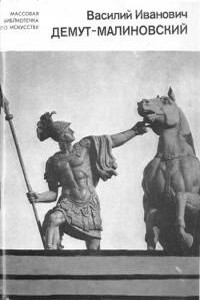
Демут-Малиновский принадлежит к блестящей плеяде скульпторов русского классицизма, деятельность которых определила небывалый расцвет искусства ваяния в первой трети XIX века. Большое творческое наследие Демута-Малиновского содержит произведения станковой и мемориальной пластики, портреты, анималистическую скульптуру и рельефные композиции. Широкий размах строительства в этот период способствовал развитию дарования скульптора-монументалиста, и именно к этому жанру относятся его наивысшие достижения. Искусство Демута-Малиновского типично для своего времени, оно соответствует основным требованиям господствовавшего стиля классицизма и в то же время несет на себе печать индивидуальности, что придает произведениям скульптора определенное своеобразие.

В книге рассказывается история главного героя, который сталкивается с различными проблемами и препятствиями на протяжении всего своего путешествия. По пути он встречает множество второстепенных персонажей, которые играют важные роли в истории. Благодаря опыту главного героя книга исследует такие темы, как любовь, потеря, надежда и стойкость. По мере того, как главный герой преодолевает свои трудности, он усваивает ценные уроки жизни и растет как личность.
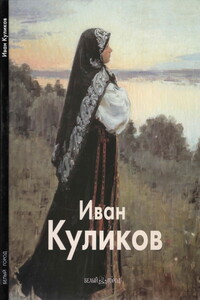
Среди множества учеников великого русского художника Ильи Ефимовича Репина одним из достойных его последователей был Иван Куликов. Творческий путь Куликова был типичным для художественной молодежи конца XIX - начала XX столетия. В его творчестве нашли свое отражение сложные социальные перемены в общественной жизни, в свободе эстетических взглядов, в переоценке пути исторического развития России.